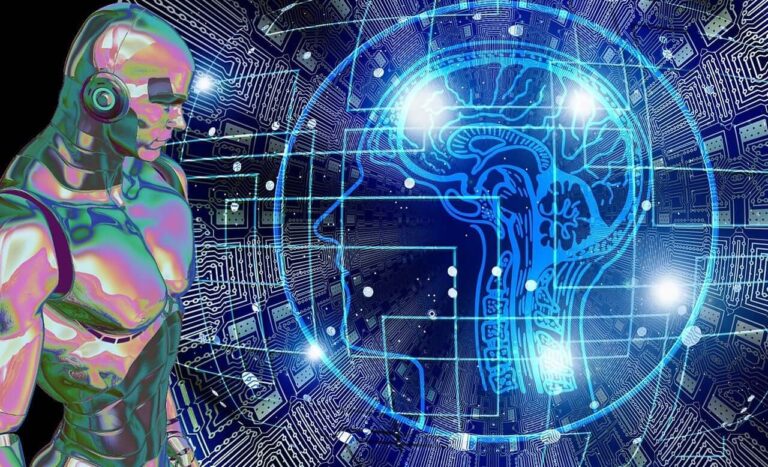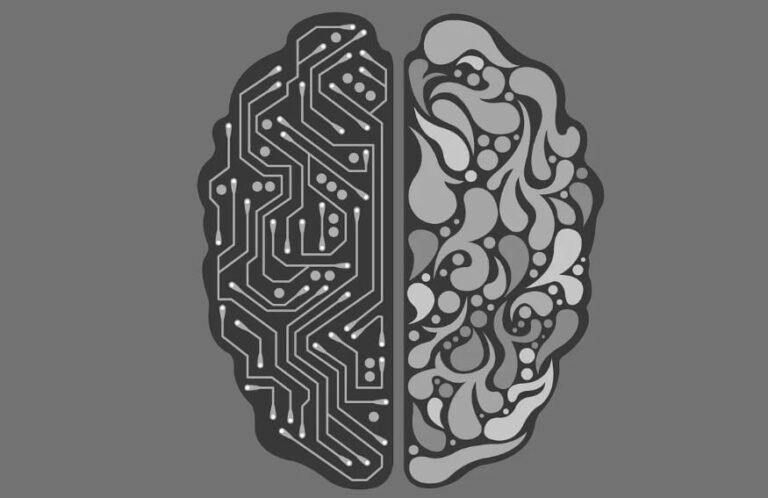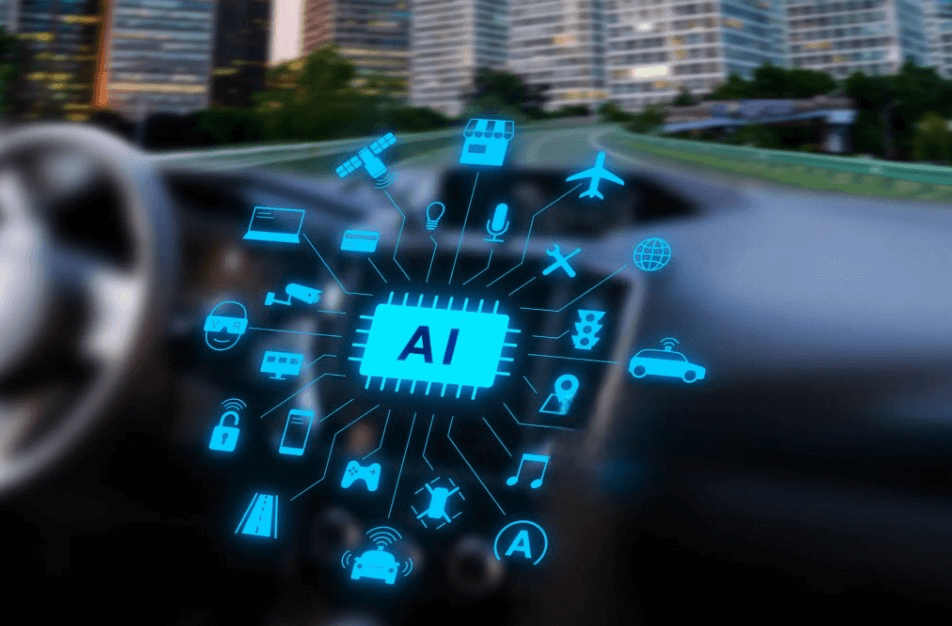Best Understanding of Machine Learning vs Artificial Intelligence in 2024

What is Artificial Intelligence?
Artificial Intelligence is an exciting field of studies that deals with the building of machines and computer systems capable of emulating human-like cognitive functions. I would love thinking about it as a way through which machines perform tasks that normally require human intelligence, such as understanding language, recognizing patterns, and solving problems. According to Google Cloud, AI refers to a general term for a number of specific techniques and algorithms whose ultimate purpose is that of making the preceding possible.
In envision AI is basically empowering machines to analyze data, learn from it, and make decisions without interference from humans. This capability is quite exciting in that it will reduce processes across boards of sectors to improve their operational efficiency.
Features of Artificial Intelligence
Artificial intelligence is essentially defined by a number of important features that are indicative of its capability. Here are some of those features that I find quite noteworthy:
Feature | Description |
Learning Ability | AI models learn from examples, or data, to further fine-tune their performance. |
Reasoning | AI can browse information and make a decision based on logical interference. |
Problem-Solving | AI solves in-depth problems by evaluating various solutions. |
Expertise Simulation | AI could even imitate human expertise in specialized domains, like medical diagnosis. |
Natural Language Processing | AI understands and reproduces human language, and thus communications are enabled. |
The power of AI in converting data into actionable insights is crucial for organizations to optimize their operations. Be it Artificial Intelligence in business or catering to the needs of the end users, the adaptability of AI is changing the fortunes of industries.
As I explore more the intersections between AI and other trending technologies, I am very excited about what this portends for applications of AI-from its impact on social media to its evolving role in shaping the future of Artificial Intelligence. Through the use of AI, we enhance productivity but also unlock new ways to interact with technology.
Introduction to Machine Learning

Machine Learning Defined
Machine learning is an interesting area of research in artificial intelligence that involves building systems capable of learning from data to make decisions on their own without prior programming. It means the use of algorithms to parse data, identify patterns, and enhance results over time. In all, machine learning forms a gateway toward the development of other high levels of artificial intelligence capable of adapting and evolving with new information (Columbia University).
You can find out more about machine learning applications simply by clicking here.
To understand how machine learning works, here is a simple table that outlines its core components:
Core Component | Description |
Data Input | Information from sources across the board. |
Algorithms | Instructions or rules that must be used for data processing. |
Learning Process | Improving continuously through the analysis of data. |
Output | Predictions or decisions from the analysis. |
Importance of Machine Learning
Machine learning is something very important in many industries, as it may imply the processing of a huge amount of data in negligible time with high accuracy. For example, in targeted marketing, businesses can segment customers according to buying habits or similar demographics and predict customer preference for product recommendations even before customers sometimes know what they are looking for (Tableau).
It will also have significant improvements in spam filtration in applications concerning e-mails. It analyzes information on undesirable e-mail content, or the senders. The improvement of spam filters through machine learning algorithms takes into account the inputs contributed by the users marking the e-mails that were filtered incorrectly. These provide additional data to improve the next data being filtered. (Tableau).
As for the financial industry, with machine learning, it helps in fraud detection during transactions. It does this by parsing huge amounts of financial data, which cannot be monitored by humans. It powers features such as mobile check deposits, credit scoring, lending decisions, and enables all sorts of other customer experience enhancement.
The deeper one delves into the circles of artificial intelligence applications, it goes without saying that machine learning not only transforms information into data but also into actionable insights and lays a foundational role in the evolution and success of AI systems.
Differentiating AI and Machine Learning
Understanding the differentiation between artificial intelligence and machine learning was somewhat overwhelming when I first got introduced to the world of technology. However, it became clear with further explanation that even though these terms are invariably used together, they are typically distinguished by their characteristics and applications .
Artificial Intelligence vs. Machine Learning
While Artificial Intelligence is the broad concept of building systems which can execute tasks generally needing human intelligence, such as problem-solving, understanding natural language, and recognizing patterns, Machine Learning is a subset of AI, concerning the capability of systems to learn from data and improve performance autonomously with experience without explicit programming.
Here’s a fast comparison:
Feature | Artificial Intelligence | Machine Learning |
Definition | Imitation of human intelligence | Change of algorithms according to incoming data |
Goal | Doing tasks intelligently | Improving prediction accuracy with time |
Techniques | Reasoning, problem-solving, etcETERA | learns from statistics-based data |
Applications | Chatbots, recommendation systems | Image recognition, natural language processing |
The difference gets a little clearer when considering AI applications in that; artificial intelligence applications use logic and rules, while ML models are created by exposing systems to enormous datasets and helping them identify patterns.
Basic Ideas of AI and ML
The following are some of the important terminologies that are associated with AI and ML, and which to me sound rather interesting.
- Artificial Intelligence
- Natural Language Processing (NLP): Allows machines to understand and respond to human language, which is crucial for virtual assistants.
- Computer Vision: Enables systems to interpret and understand visual information from the world.
- Machine Learning
- Supervised Learning: Involves training a model on a labeled dataset, which means the algorithm learns from examples that have been tagged with the correct answer.
- Unsupervised Learning: In contrast, this method deals with finding hidden patterns in data without pre-existing labels.
These ideas help bring into light that AI is an overarching term for referring to multiple technologies, thereby including machine learning within it. In conversations with friends or other colleagues considering the differences between these two disciplines, I tend to relate the idea of machine learning to that of a tool or technique within the greater scope of AI itself.
Understanding these key concepts serves as a great foundation for those interested in how AI enhances artificial intelligence in business or in relation to the future of artificial intelligence. With technology also ever-changing, so too is the interaction between AI and ML, making it even more exciting to learn further.
The Relationship Between AI and ML
The relationship between Artificial Intelligence and Machine Learning is something that can be elucidated really well. Each one of these two fields together can create amazing synergy within the most staple sectors.
Synergies of AI and Machine Learning
We have strong systems which, integrated with AI and ML, can analyze a lot of data and give much quicker insights compared to any other human being. This integration facilitates more operational capabilities of organizations:
- Wider Data Sources: By integrating AI and ML, companies can analyze a broader range of data sources, which improves accuracy in decision-making.
- Improved Data Integrity: Together, these technologies help in maintaining high-quality data, reducing errors in analysis.
- Accelerated Data Processing: The combination of AI and ML allows for rapid processing of information, which is vital in today’s fast-paced business environment.
- Operational Efficiency: Organizations observe higher operational efficiency as they automate processes and reduce human errors.
- Predictive Analytics: Incorporating predictive analytics into business strategies allows for informed decision-making and proactive measures (Google Cloud).
Benefits of Integrating AI and ML
Artificial Intelligence, integrated with machine learning, provides an extensive list of advantages. This, therefore, has rendered it a perfect alliance for most industries. Some of the main benefits are outlined below:
Benefit | Description |
More Data Inputs | Greater sources of data implication lead to extensive and inclusive insights. |
Better Decision-Making | Quicker and improved decision-making processes enhance overall productivity. |
Enhanced Operational Efficiency | Efficiency An effective framework enables the organization to iron out or smoothen the processes across industries. |
Diverse Applications | Retail, healthcare, finance, and many more industries see applications, thus making several operations optimal. |
Industries are benefiting from both AI and ML combinations. For instance, in the healthcare sector, using predictive analytics to forecast outcomes for patients, and using recommendation engines in retail to make more personalized suggestions, enhance the customer experience.
AI and ML are among those bleeding trends that reshape the ways companies do business and make strategic decisions. The potential for process improvement, fraud detection, and enhanced customer experiences among various sectors is huge. Exploring many of the applications will be able to tell one about how these two powerful technologies are changing the business landscape in their respective discusses on artificial intelligence applications, especially regarding the future of artificial intelligence.
Applications in Various Industries
The growth of AI and ML, in turn, is successful on different avenues. From the application side, this area affects areas such as healthcare and financial activities. Decision-making and overall experiences related to these critical industries are aptly enriched by such changing dynamics.
AI and ML in Healthcare

AI and ML are changing the face of patient care in the health sector. Facial recognition is several striking applications that help in the detection of genetic diseases, monitoring the use of medicines. This technology also helps in saving children from sex trafficking and exploitation, hence can be used for social good. A constantly growing list of healthcare applications influenced by facial recognition points toward the technology’s ever-growing importance in medical practice.
Application | Description |
Genetic Disease Detection | Based on facial analysis, detection of genetic disorders. |
Medication Monitoring | Monitoring the intake of prescribed medicine by a patient. |
Child Exploitation Prevention | Exploitation Based on faces, identification of missing trafficking cases. |
AI and ML in Finance

Machine learning in finance does a lot to enhance security and improve the customer experience through fraud detection in volumes of financial data. Quite opposite to manual checks, ML identifies suspicious activities and takes action much more quickly. Equally important, technologies such as mobile check deposits and sophisticated credit scoring methods enhance lending decisions and overall banking experiences with Tableau.
Application | Description |
Fraud Detection | To monitor unusual patterns in transactions for fraud. |
Mobile Check Deposit | Automates deposit processes with the help of image recognition. |
Credit Scoring | Data algorithms to denote creditworthiness. |
From health and medicine to financial services, AI and ML investments are improving operations and making forecasts far more effective. This better equips the organization to analyze more varied sources of information with minimal human error, enabling much stronger decision-making. I strongly believe that the continuous integration of AI applications into business processes is bound to revolutionarily change the way we interact with technology to deliver services, opening ways toward a smarter future. Further reading might be found in our article on artificial intelligence applications.
Advantages of AI and ML
Operating Efficiency and decision-making processes are key points of discussion that can be seen as a huge advantage; AI and ML will, for sure, change how we function in various fields. Here are the key benefits in terms of operational efficiency and decision-making processes.
Operational Efficiency with AI
AI has the potential to fundamentally revamp operational efficiency within organizations. Value is unlocked through process automation to smoothen processes and offer actionable insights, thus guaranteeing improved outcomes. This impact of AI has begun to reverberate from different industries: health care, retail, manufacturing, and so on.
Following is a rundown of how AI enhances operational efficiency:
Benefit | Description |
Task Automation | Reduces manual effort from employees and frees them up for higher-order tasks. |
Increased Efficiency | It automates workflows and, therefore quickens the pace of service delivery and resource allocation. |
Data Integration | It brings together various data sources for complete insights, hence allowing users to make informed decisions. |
Reduced Human Error | It cuts down on the number of errors associated with handling and processing data, hence its accuracy is improved. |
AI and machine learning are now key ways through which efficiency is being driven in daily operations. To learn more about how AI is being used, be sure to check out our article on artificial intelligence in business.
Decision Making in Machine Learning

Machine learning helps significantly in decision-making by allowing faster and more accurate analysis of data. In the modern context, the use of data becomes very important in empowering organizations to make intelligent decisions.
Some of the key benefits of machine learning for decision-making include the following:
Benefit | Description |
Accelerated Decisions | Processes large datasets at faster speeds, hence bringing about timely insights |
Improved Accuracy | Advanced algorithms improve the accuracy of predictions and recommendations |
Diverse Data Sources | Sources It involves a variety of sources that help in providing full insight into any situation. |
Predictive Analytics | Providing the forecast that will enable organizations to anticipate trends and customer behaviors. |
Example applications in industries such as finance and health include using machine learning models to analyze volumes of historic data in search of patterns that could be extremely useful in risk assessment and fraud detection. –Microsoft Azure.
Knowing the juncture of AI with ML opens an enterprise to a host of opportunities for better operational processes and wiser decision-making. Learn more about the evolving nature of these technologies in the future of artificial intelligence and exciting artificial intelligence applications driving changes today.
Leveraging AI Capabilities
What amazes me in understanding the capability of AI is how its practical implementation and data transformation through ML empower various processes and decision-making.
Practical Implementation of AI

AI can help to enhance the operational efficiency of an organization. In other words, AI automates basic tasks and facilitates processes, giving way to businesses to focus on strategic decision-making. The analysis that AI does with vast amounts of data guides the key decisions of business houses, minimizing human errors. Example: AI may correctly diagnose diseases in health care, or in a business, it may manage customer relationships.
Here is a generic overview of some areas of application of AI in different industries:
Industry | Application | Benefit |
Healthcare | Diagnosing diseases | Improves accuracy and speed |
Transportation | Logistics Automation | Improves efficiency |
Marketing | Customer Behavioral Predictions | Informs targeted campaigns |
Business Management | Market segmentation and campaign management | Saves time and streamlines tasks |
For those who’d like to dig deeper into how AI can be integrated into business, see our article on artificial intelligence in business.
Transforming Data with Machine Learning
The most important role of Machine Learning is to transform data. I find it quite interesting because, through ML, the machine learns the pattern and then predicts it from the data. Its functionality to analyze huge sets of data helps organizations keep their data integrity intact and make swift decisions.
Key benefits provided by Machine Learning are the integration it does with predictive analytics. For example, ML brings out all kinds of trends related to consumers where businesses can effectively develop marketing strategies. Its potential for automating data-driven decisions enables firms to be more effective in their operations and hence respond faster to changes in the market.
The integration of AI and ML allows organizations to analyze a greater range of data sources, with the synergy enhancing overall productivity. To get deeper into the future of AI, one is free to look into our article on the future of artificial intelligence.
The ability, therefore, to automate various tasks, improve forecasts, and enable better decision-making-all because of AI combined with Machine Learning-would bring immense possibilities. Applications from healthcare to finance to marketing are overwhelming and changing.
Future of AI and Machine Learning
Gazing into the crystal ball regarding the near future of AI and ML, it is without question obvious that both technologies are rapidly evolving and already beginning to shape many aspects of our lives. In this paper, I’ll cite some of the emerging trends in AI and comment on some probabilities for its development.
Emerging Trends in AI
This trend of AI adoption is remarkable. While in 2017, only 20 percent had adopted AI in at least one business area, in 2024 this will be 50 percent. Where the average number of AI capabilities used by organizations was, on average, 1.9 in 2018, that has grown to 3.8 out of a total of 33 capabilities in 2023. It shows this trend that businesses are turning toward benefiting from integrating AI into their operations.
Year | AI Adoption (%) | Average AI Capabilities Used |
2017 | 20% | 1.9 |
2018 | N/A | 1.9 |
2023 | N/A | 3.8 |
2024 (Projected) | 50% | N/A |
The investments in AI also continue to grow, as more than half of the survey respondents reported spending over 5 percent of their digital budgets on AI initiatives. Sixty-three percent of the respondents anticipate their investment in AI growing in the next three years. The areas of biggest value derived from AI have shifted to product and service development, marketing and sales, and corporate finance (InData Labs).
AI Evolution and Prospects
In as much as AI and machine learning do have a bright future ahead, that will be possible as long as organizations continue to find innovative means of exploiting the capabilities for use in different areas. Examples of areas that make use of AI include marketing, selling, product development, and decision-making. Its capability to improve operational efficiency and ability to provide financial returns makes it an attractive investment for businesses.
While the application of AI is increasing, simultaneously the organization has to aim at coping with all the dangers and challenges associated with the implementation of AI. Such a balancing factor would be quite crucial for the complete harnessing of the potential of AI technologies while minimizing any disadvantages.
As AI continues to evolve, it will bring overwhelming changes to industries and can affect everything from customer service to business decisions. To learn more about the use of AI in business, visit our artificial intelligence in business page or delve deeper into the exciting uses of AI with applications of artificial intelligence. Want to know about the influence of AI in the digital world? Check out our piece on ai in social media.
